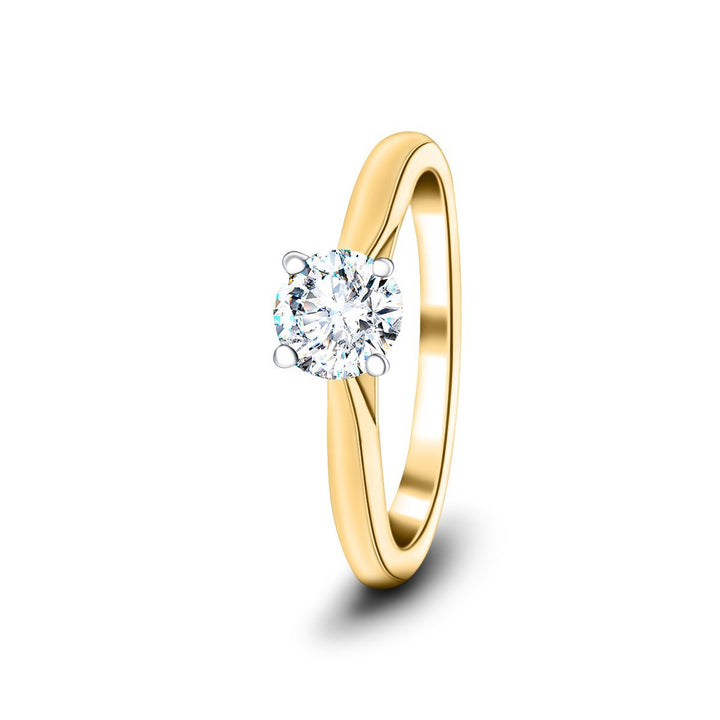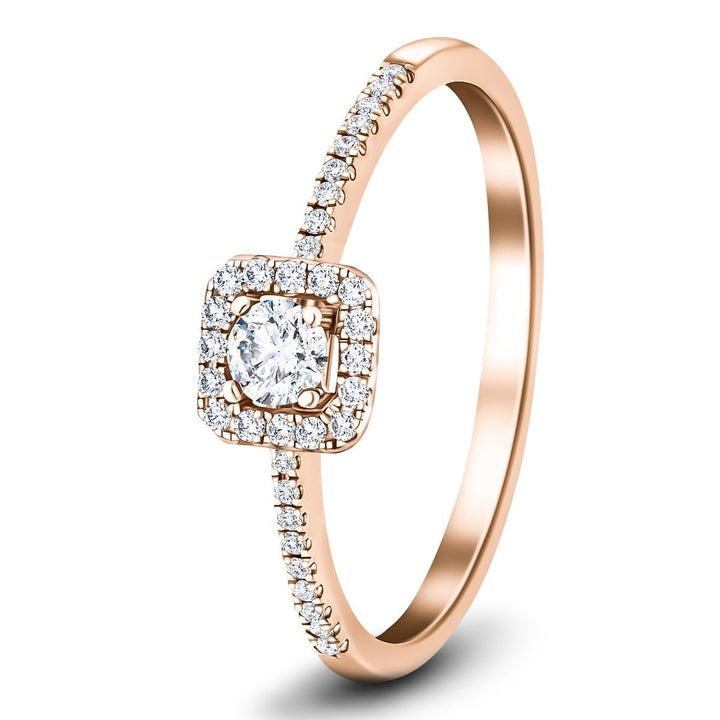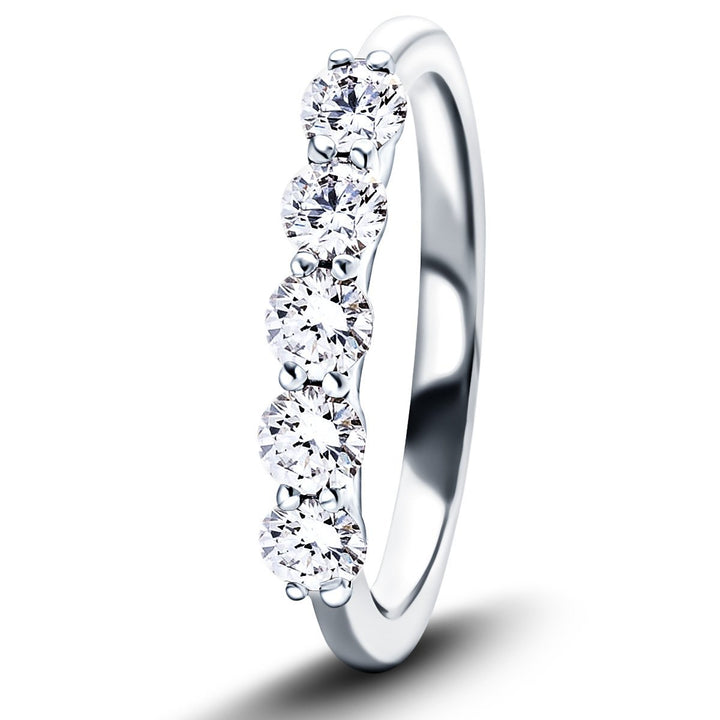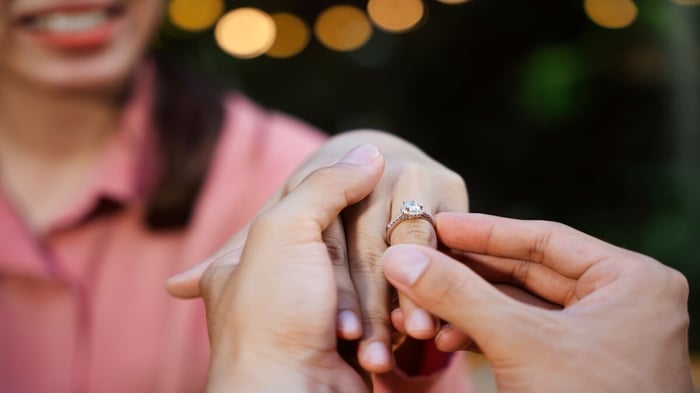Which is Better? Uncover The Pros and Cons of Gold and Platinum Engagement Rings
Finding the right metal for your engagement ring is a big decision. Gold and platinum rings which is the best choice? It may seem overwhelming, but it doesn't have to be! With the help of an experienced style magazine columnist, you can make sure you choose the perfect metal for your special day.
When selecting an engagement ring, so many choices are available that it can be challenging to know where to start. But one of the most important decisions is choosing which metal best suits you and your partner's taste: gold, platinum or another metal? As someone who has been helping couples select rings for many years, I've got some insight on how to make this crucial choice with ease.
Gold and platinum each offer their own unique characteristics when used in jewellery design; both materials come with their own set of pros and cons. So let's take a closer look at gold vs platinum - read on if you want advice from an expert! This article is designed to provide information about these two options to weigh what works best for you before committing to either material.
Types Of Metals
Choosing the suitable metal for your engagement ring can be a daunting task. So many different types of metals are available, from rose and white gold to palladium and tungsten, that it can be overwhelming. But fear not - here is an overview of the various options to help you make the best decision for your special day.
Platinum or gold with some alternatives…
First up is gold – both yellow and white varieties are popular choices for engagement rings, as they provide a classic look that never goes out of style. Rose gold has become increasingly fashionable in recent years; its pinkish hue gives off a romantic vibe perfect for an engagement ring. Meanwhile, palladium offers similar features but slightly less durability than pure gold, making it ideal if you're looking for something more affordable. Palladium is still less easily found in most engagement ring collections in the UK.
Titanium and tungsten have also become more popular thanks to their hard-wearing properties and sleek designs. Both offer great value without compromising quality or aesthetics – although titanium may scratch more easily than tungsten over time. Titanium is incredibly lightweight yet still extremely strong. At the same time, tungsten has a darker colour which makes it stand out from other traditional metals.
Certified Diamond Solitaire Engagement Ring 0.40ct E/VS Quality 18k White Gold

£1,137.00
£1,797.00
The light sparkle of hand-cut diamonds. The brilliance of 18k white gold. Combined and finished with care by our UK craftsmen resulting in a solitaire engagement ring that displays timeless elegance and sophistication and will be a fitting token of… read more
Whatever option you choose, bear in mind the cost comparison between them all before deciding. After all, no one wants any unpleasant surprises when it comes to paying for their dream wedding ring!
Our engagement ring collections make it easy to compare the relative costs of rings in different precious metals.
Regarding engagement ring metals, the cost comparison is a significant factor. Gold and platinum have distinct price points that must be considered when deciding which metal suits you. While gold may have the edge in affordability, platinum has unique benefits - but at a higher cost.
The exact difference in cost between these two metals will depend on several factors, including purity (karat) and current market prices of each metal. Platinum tends to be more expensive than gold due to its higher resistance to tarnishing, greater durability, and scarcity. All these qualities make platinum the preferred choice among jewellers around the world. Generally, an 18-karat solid yellow gold engagement ring is usually slightly cheaper than one made with 95% pure (950 parts per thousand) platinum.
However, if budget is a concern, other options, such as white or rose gold, or even silver, offer good value for money without design aesthetics.
Silver is another option if you're looking for something less traditional, especially if your budget is tight. Be aware that silver tarnishes easily, requiring regular cleaning and polishing. Silver is relatively soft and can be bent or crushed under normal wear. Most jewellers, including ourselves at All Diamond, do not recommend its use in a ring that will be worn daily.
Ultimately, deciding what metal best suits your needs requires careful consideration based on personal preference and price point. With some research and extra thought put into this life-changing purchase, you'll find the perfect option for your ideal engagement ring! Onward now to exploring design options...
Design options for your ring
Many brides and grooms opt for an engagement ring design that is unique to them and emphasises the sentimentality of their union. Whether sculpted details, diamond settings or custom engraving, there are countless ways to make an engagement ring special. At All Diamond, we offer a custom design service that can make your vision a reality - don't hesitate to get in touch with us for details.
Mix Your Precious Metals
Mixed metals have also become increasingly popular in recent years. Combining gold, platinum, and other precious metals allows couples to create something wholly individualised. However, when opting for a mix of metals, it's important to consider how well they'll work together from aesthetic and practical perspectives. Softer metals, such as yellow gold, may not wear as well if paired with harder metals, like white gold or platinum, which can more easily scratch.
The choice between gold or platinum ultimately comes down to personal preference. While some prefer the classic look of yellow gold, others enjoy the contemporary feel offered by platinum. Whichever you choose, ensure it reflects your style, as this will be part of your life for many years!
Regardless of the type of metal you select for the engagement ring, one thing remains certain: each piece should be carefully considered to capture their personality while standing the test of time.
Certified Diamond Solitaire Engagement Ring 0.40ct E/VS Quality 18k Yellow Gold

£1,137.00
£1,797.00
The natural beauty of diamonds is showcased to dazzling effect in this elegant yellow gold engagement ring. The ring features a 0.40CT and E/VS quality diamond which glistens and sparkles against the 18K yellow gold band. This ring will be… read more
Durability And Maintenance
When it comes to durability and maintenance, gold and platinum have their own advantages. Gold is a naturally soft metal, meaning it is more prone to scratches and dents than its counterpart. Platinum, however, is much harder and therefore offers greater wear resistance. Let's compare these two metals in terms of how they withstand everyday use:
• Yellow Gold: It has excellent malleability, meaning that any damage can be easily repaired or polished away without risking the deterioration of the ring's integrity. However, regular polishing will be required to maintain its lustre.
· White gold: It will require some regular maintenance to keep its looks. White gold is made with an alloy (mixture) of gold with white metals, such as silver or palladium. The exact composition of white gold can vary depending on the manufacturer. Still, typically it is made from around 75% gold and 25% other metals. Adding white metals gives white gold its distinct colour and improves its durability and scratch resistance. The resulting colour is then enhanced with a coating of rhodium which gives the silvery white colour we associate with white gold. This wears away over time and is typically recoated every few years, depending on how often the ring is worn, its design, and the environmental conditions it encounters. Recoating is relatively fast and inexpensive.
• Platinum: The robust metal makes this an ideal choice for those seeking a long-lasting engagement ring with minimal maintenance requirements. Its resistance to tarnish also ensures that your ring won't need frequent polishing over time. Platinum is an excellent pick if you're after something low-maintenance yet stylish!
These are just some of the considerations when choosing between these two metals for your engagement ring. Remember that gold and platinum offer different benefits depending on your look and whether you'd like one with higher longevity or lower upkeep needs. In either case, each material promises stunning results, whichever choice you make! With such varied colour variation options available between gold in all its forms and platinum, surely something out there fits perfectly with your desired style...
Square Halo Diamond Engagement Ring with 0.25ct G/SI in 18k Rose Gold

£677.00
£957.00
Each one is unique, a true work of art created to suit your style and personality. A sophisticated and elegant way to express your love, a ring crafted from the finest metals in the world. Suitable for any occasion, this… read more
Colour Variations
Having considered the durability and maintenance of gold vs platinum, it's time to move on to colour variation and skin tone. For those looking for a classic look, yellow gold is a timeless choice that will never go out of style and works with any skin tone. White gold is an excellent option if you're after something more contemporary. Its silver colour goes perfectly with modern jewellery pieces. Rose gold has become increasingly popular in recent years. Rose gold adds a touch of warmth to engagement rings; this metal also looks stunning when paired with diamonds or other gemstones.
When opting for either gold or platinum alloys, various shades are available - from pale champagne hues to deep grey tones - allowing you to choose the perfect one for your ring design. Consider how different colours can add subtle elements such as luxury or playfulness, depending on what suits you best! Ultimately, deciding on the right colour combination isn't just about aesthetics: it should reflect who you are as individuals too.
Environmental Impact And Precious Metals
When choosing an engagement ring, the environmental impact should not be overlooked. It's important to consider eco-friendly metals with much smaller carbon footprint than conventional alternatives. Here are some points to bear in mind:
- Green Alternatives - Look for green alternatives like recycled gold and platinum or sustainable jewellery crafted with ethically sourced gemstones. These materials offer excellent value and reduce the amount of minerals mined from places where production can cause harm to the environment.
- Eco-Friendly Metals - Choose eco-friendly metals such as sterling silver or palladium, which are naturally abundant elements that don't require intensive mining operations that create pollution. Additionally, these metals do not contain harmful chemicals or require heavily polluting chemical treatments during their processing stages.
- Sustainable Jewellery - Investigate sustainably made rings crafted out of responsibly sourced diamonds and gems stones too – there's no need to settle for anything less! Rings constructed using traditional methods like prong setting and pave styles also help to preserve nature by minimising diamond wastage.
So while it might take longer to find something special that won't leave you feeling guilty later on, investing time into researching green alternatives is well worth it in the long run. After all, your gorgeous new bling will look just as dazzling, knowing it came from ethical sources! For more information about white gold and platinum, please check out this article HERE.
Five Stone Diamond Ring with 3.00ct G/SI Quality in Platinum

£11,197.00
£21,347.00
This elegant diamond five stone ring is a distinctive, five stone diamond designed ring that is unique. The subtle white platinum band creates a stunning focal point that catches the light as it moves. This elegant ring is crafted with 3.00ct… read more
The Choice Is Yours! We're Here To Help!
In conclusion, choosing the right metal for your engagement ring is an important decision that should be based on personal preference. While there are similarities between gold and platinum in terms of design options, cost, durability and maintenance, they both differ in colour variation and environmental impact.
Gold has been a traditional choice of metal for centuries due to its yellow hue, which many couples find attractive. However, it's worth noting that over 50% of all mined gold is used for jewellery, making it potentially unsustainable compared to other metals such as platinum or silver.
On the flip side, platinum offers excellent strength and durability with minimal upkeep required - perfect if you're looking for something timeless to last a lifetime. It also has lower carbon emissions than gold during its production process, so if sustainability is particularly important to you, this may be the best option.
Whatever your budget or style preferences are, consider each metal type before making the final decision about your engagement ring! You can see our collections of engagement rings HERE and make comparisons in colour and price so that your choice suits you and your fiancée.




